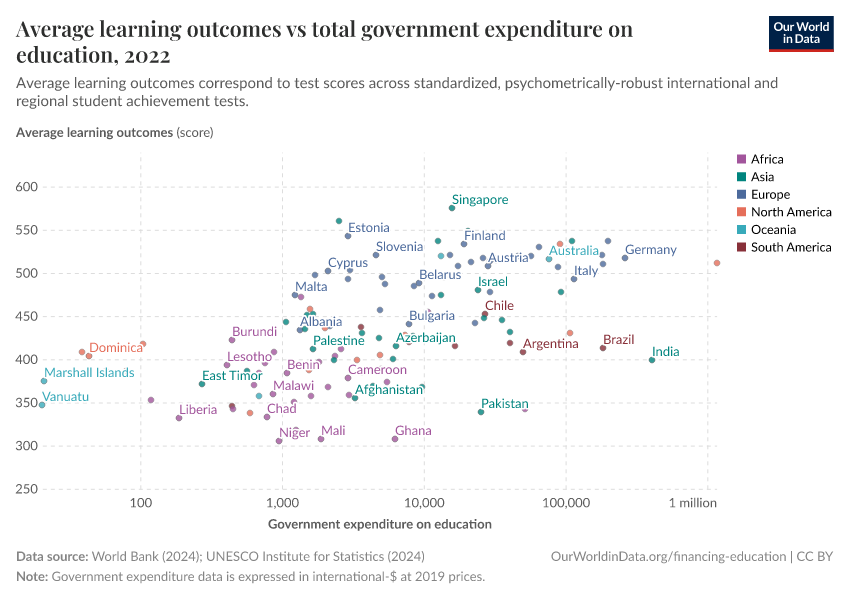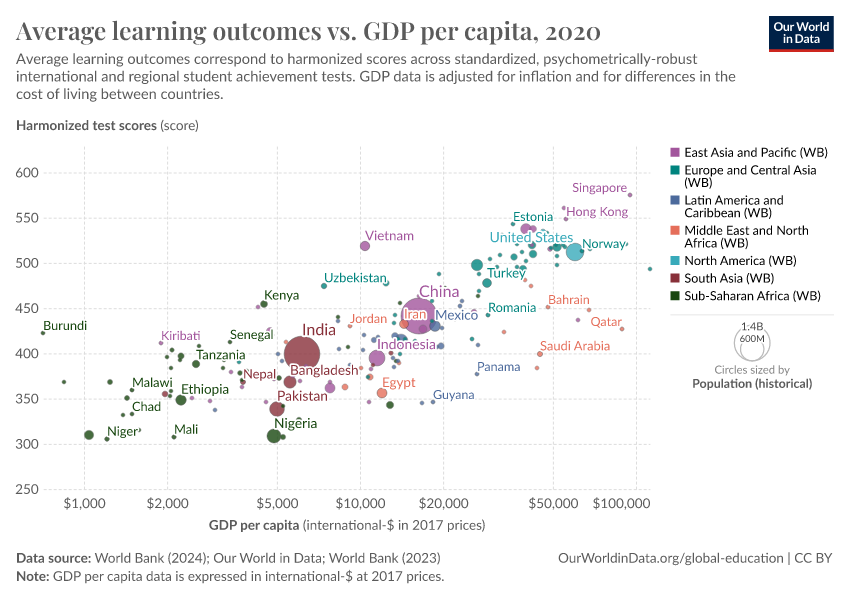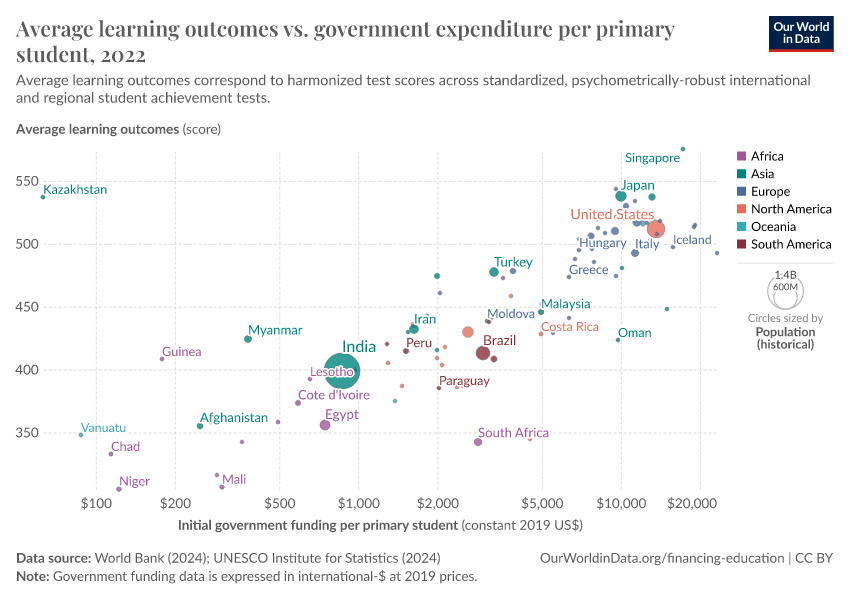Average learning outcomes

What you should know about this indicator
- Harmonized learning outcomes combine student test results into scores that can be compared across countries.
- This data includes developing countries that are often missing from major international tests by incorporating regional assessments.
- The data combines well-known international tests like TIMSS, PIRLS, and PISA with regional tests like SACMEQ.
- Test scores are adjusted using statistical methods so they can be compared fairly across different subjects, grade levels, and testing years.
- This creates a dataset where countries can be compared on the same scale, accounting for differences in when tests were taken and what grades were tested.
- The scoring system is based on TIMSS standards where 300 points represents basic skills and 625 points shows advanced performance.
- Higher scores mean students in that country typically perform better on these academic tests, though the tests don't cover all subjects or age groups.
What you should know about this indicator
- Harmonized learning outcomes combine student test results into scores that can be compared across countries.
- This data includes developing countries that are often missing from major international tests by incorporating regional assessments.
- The data combines well-known international tests like TIMSS, PIRLS, and PISA with regional tests like SACMEQ.
- Test scores are adjusted using statistical methods so they can be compared fairly across different subjects, grade levels, and testing years.
- This creates a dataset where countries can be compared on the same scale, accounting for differences in when tests were taken and what grades were tested.
- The scoring system is based on TIMSS standards where 300 points represents basic skills and 625 points shows advanced performance.
- Higher scores mean students in that country typically perform better on these academic tests, though the tests don't cover all subjects or age groups.
Sources and processing
This data is based on the following sources
How we process data at Our World in Data
All data and visualizations on Our World in Data rely on data sourced from one or several original data providers. Preparing this original data involves several processing steps. Depending on the data, this can include standardizing country names and world region definitions, converting units, calculating derived indicators such as per capita measures, as well as adding or adapting metadata such as the name or the description given to an indicator.
At the link below you can find a detailed description of the structure of our data pipeline, including links to all the code used to prepare data across Our World in Data.
Reuse this work
- All data produced by third-party providers and made available by Our World in Data are subject to the license terms from the original providers. Our work would not be possible without the data providers we rely on, so we ask you to always cite them appropriately (see below). This is crucial to allow data providers to continue doing their work, enhancing, maintaining and updating valuable data.
- All data, visualizations, and code produced by Our World in Data are completely open access under the Creative Commons BY license. You have the permission to use, distribute, and reproduce these in any medium, provided the source and authors are credited.
Citations
How to cite this page
To cite this page overall, including any descriptions, FAQs or explanations of the data authored by Our World in Data, please use the following citation:
“Data Page: Average learning outcomes”, part of the following publication: Hannah Ritchie, Veronika Samborska, Natasha Ahuja, Esteban Ortiz-Ospina, and Max Roser (2023) - “Global Education”. Data adapted from World Bank. Retrieved from https://archive.ourworldindata.org/20250909-093708/grapher/average-harmonized-learning-outcome-scores.html [online resource] (archived on September 9, 2025).How to cite this data
In-line citationIf you have limited space (e.g. in data visualizations), you can use this abbreviated in-line citation:
World Bank (2024) – processed by Our World in DataFull citation
World Bank (2024) – processed by Our World in Data. “Average learning outcomes” [dataset]. World Bank, “Human Capital Index - Harmonized Test Scores” [original data]. Retrieved December 20, 2025 from https://archive.ourworldindata.org/20250909-093708/grapher/average-harmonized-learning-outcome-scores.html (archived on September 9, 2025).

